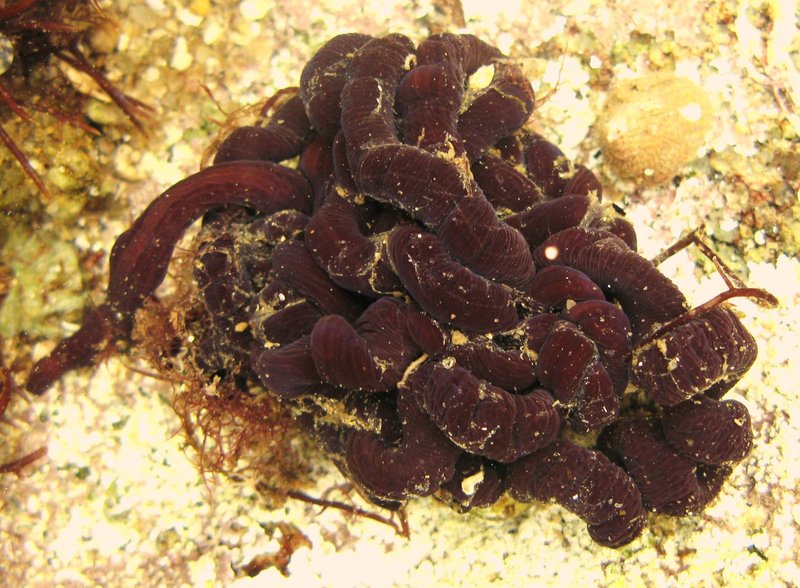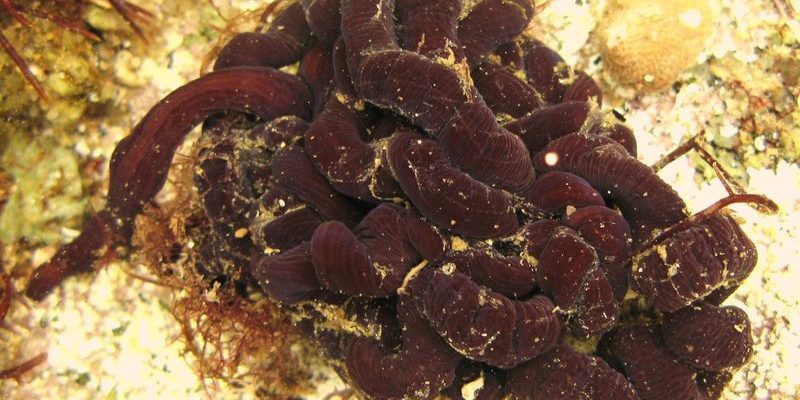
Imagine walking along the shore, the salty sea breeze tangling your hair, and there, in the water, are these long, graceful beings flowing like ribbons. Bootlace worms are mesmerizing in their own right, but they also play essential roles in their habitat. It’s kind of like how the unsung background singers in a band add depth to a song, even if they’re not always in the spotlight. Let’s dive deeper into the world of bootlace worms and discover why they matter so much in estuarine environments.
What Are Bootlace Worms?
Bootlace worms are marine worms that belong to the phylum Nemertea, or ribbon worms. They can grow impressively long, with some specimens reaching up to 30 meters. Yes, you read that right! That’s longer than a blue whale! Their elongated bodies are often a stunning mix of colors, ranging from yellow to brown, which helps them blend into their environment.
These worms are famous for more than just their length. They have a unique anatomical feature called a proboscis, which they use to catch prey. Think of it as a high-tech fishing rod, allowing them to capture small fish and invertebrates. Bootlace worms play a vital role in the food chain, serving as both predators and prey, contributing to the delicate balance in their ecosystem.
The Role of Bootlace Worms in Estuarine Ecosystems
Estuarine ecosystems are where river meets sea, creating a dynamic environment rich in nutrients. Here, bootlace worms thrive, and their presence indicates a healthy ecosystem. But what exactly do they do? Here are a few key roles they play:
- Nutrient Cycling: Bootlace worms help break down organic matter, recycling nutrients back into the ecosystem. This process is crucial for plant growth and overall ecosystem health.
- Food Source: They are a food source for various larger marine animals, such as fish and birds. Without them, these predators would struggle to find enough sustenance.
- Habitat Structure: When bootlace worms burrow into sediments, they help aerate the soil, promoting healthy growth for other organisms and plants that rely on the sediment’s quality.
You might be wondering why nutrient cycling matters. Well, think of it like this: just as our bodies need a balanced diet to thrive, ecosystems need a mix of nutrients to flourish. Bootlace worms are vital for keeping that balance intact.
Habitats of Bootlace Worms
Bootlace worms are typically found in sandy or muddy substrates in estuaries, where they spend much of their time buried beneath the surface. They thrive in areas with rich organic material, allowing them to feed effectively. Here are some common habitats:
- Intertidal Zones: These are the areas between high and low tide, where bootlace worms can easily find shelter and food.
- Subtidal Zones: Below the low tide mark, these regions are typically more stable and provide suitable conditions for worms during tidal changes.
- Estuarine Marshes: These marshy areas are nutrient-rich and offer bootlace worms a perfect environment to thrive.
Estuaries are incredibly dynamic. Changes in salinity, temperature, and nutrient levels can significantly affect the distribution and health of bootlace worms. This makes them excellent indicators of ecological health. If you see fewer bootlace worms, it may be a sign that something’s amiss in the ecosystem.
Bootlace Worms and Biodiversity
One of the remarkable things about bootlace worms is their contribution to biodiversity. They coexist with a plethora of other species in estuarine environments, creating a rich tapestry of life. A diverse ecosystem is generally a healthier one, as it can withstand environmental changes better. Here’s how bootlace worms fit into this picture:
- Species Interactions: Bootlace worms interact with various organisms. For instance, some fish feed on them, while they help control the population of organisms they prey upon.
- Habitat Diversity: By living in different types of habitats within the estuary, bootlace worms can support other species that rely on those habitats for food and shelter.
- Genetic Diversity: The population of bootlace worms can vary in genetic makeup. This diversity allows them to adapt to changes in environmental conditions more readily.
In essence, bootlace worms play a crucial role in maintaining a balanced and diverse community in estuarine ecosystems. When you think about it, they are like the unsung heroes of the estuary, contributing to the overall health of their environment.
Environmental Threats to Bootlace Worms
Unfortunately, bootlace worms face several threats that can impact their populations and by extension the entire estuarine ecosystem. Here are a few of the most pressing issues:
- Pollution: Industrial waste, plastics, and runoff from agriculture can pollute their habitats, harming bootlace worms and other marine life. This is like putting toxic waste in your favorite swimming spot.
- Habitat Loss: Coastal development and dam construction can alter or destroy the delicate ecosystems bootlace worms depend on. Fewer places to live mean fewer worms.
- Climate Change: Rising sea levels and changes in water temperatures can affect salinity and sediment composition, making it harder for bootlace worms to survive. It’s like having your home constantly change without warning.
Addressing these threats is crucial. Protecting bootlace worms means safeguarding the health of estuarine ecosystems and the countless species that call them home.
The Future of Bootlace Worms and Their Ecosystem
The health of bootlace worms reflects the overall state of estuarine ecosystems. While they face threats, conservation efforts can help maintain their populations and, by extension, the health of their environments. Here are a few ways we can help ensure a brighter future for bootlace worms:
- Pollution Control: Advocating for cleaner waterways and responsible waste disposal can help reduce pollution in estuaries.
- Habitat Protection: Supporting local conservation initiatives that protect estuarine habitats is crucial for maintaining the diverse life that lives there.
- Climate Action: Tackling climate change at all levels—local, national, and global—can help mitigate its effects on marine ecosystems, allowing bootlace worms to thrive.
In a way, caring for bootlace worms is like caring for the health of an entire ecosystem. When we protect them, we protect a web of life that benefits everything from tiny organisms to majestic birds flying overhead.
In conclusion, bootlace worms may seem simple at first glance, but they play a multifaceted role in estuarine ecosystems. They help maintain balance, support biodiversity, and signal the health of these dynamic environments. By understanding and protecting them, we also safeguard the future of thriving estuaries for generations to come. So the next time you’re near an estuary, take a moment to think about these amazing creatures and all they do beneath the surface.

